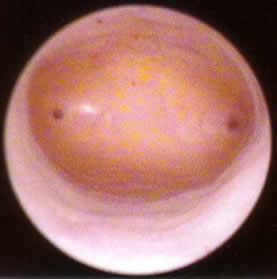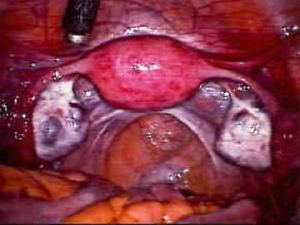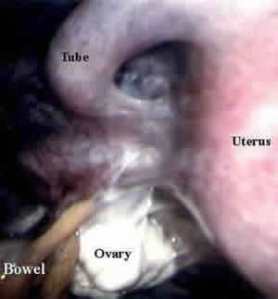Rotunda Fertility Clinic and Keyhole Surgery Centre
The role of surgery in patients with infertility is largely through keyhole surgeries. Hysteroscopy is done to access the inside of the uterus for evaluation as well as for corrective surgery such as removal of polyps or fibroids growing into the cavity of the uterus, division of uterine septum etc,. Laparoscopy is done for infertility assessment (in patients with unexplained infertility on primary investigation), surgical management of endometriosis, lysis of adhesions, ovarian drilling, myomectomy (removal of fibroids), hydrosalpinx removal prior to IVF cycle and management of ectopic pregnancy.
Problems with fertility have become an increasing problem in the late 20th and early 21st century.Infertility is one of the common problems that couple face especially when trying to start a family. Over the years, various treatments have been tried in order to find a solution to this problem, and as a result, numerous researches and studies have been started.
Research has shown that there are many causes to infertility. Some causes are more on the hormonal imbalance of each person, whereas there are some which have certain defects or abnormalities in the physical structure of the person. There are also those who have developed certain diseases or problems that led to the infertility, and many other reasons.
One of the treatments available to address infertility problems are surgical methods. There are various types of infertility surgeries that are available; these differ between men and women. The role of surgery in patients with infertility is largely through keyhole surgeries. Causes of female factor infertility may include:
• Tubal blockage or obstruction
• Endometriosis and pelvic pain
• Menstrual issues including premature menopause
• Problems with ovulation e.g. polycystic ovarian disease
Starting off with the procedures done on women, here are the following infertility surgery procedures normally being done:
Hysteroscopy
Hysteroscopy is the procedure that allows a gynaecologist to look inside the uterus with the help of a long tube about the size of a straw which has a built in viewing devise. It is inserted through the vagina and the cervix (neck of the uterus) into the cavity of the uterus (endometrial cavity). The cavity is distended with fluid to enable proper visualisation. This procedure is useful for diagnosis and treatment of some problems that cause infertility, miscarriages or abnormal menstruation. Hysteroscopy is generally a procedure with low risk of complications and enables quick and effective treatment. Recovery from the surgery is also quick.
Hysteroscopy may be
- Diagnostic hysteroscopy: to examine the inside of the uterus to either diagnose or confirm the results of other tests such as hysterosalpingography (HSG). Polyps (fleshy tags arising from the lining of the uterus), fibroids (harmless growths arising from the muscle of the uterus), scarring or developmental defects on the inside of the uterus can be detected through this procedure.
- Operative hysteroscopy may be used instead of major abdominal operation to treat some problems such as scarring, developmental abnormalities, and fibroids.
- Operative hysteroscopy
Ultrasound with saline – hydrosonogram – showing uterus, endometrial cavity (black area in middle), and polyp (between cursors)
Diagnostic laparoscopy
Diagnostic laparoscopy is a procedure that is done to look at the organs and tissues in the abdomen. It is an essential part of infertility work up as some conditions such as endometriosis and tubal damage cannot be reliable and appropriately assessed by any other modality of investigation. In addition to diagnosis, this also gives surgeon the opportunity to treat some of the conditions at the same sitting rather than subject the patient through another surgical procedure and anesthesia.
In Laparoscopy the incision is small (keyhole) and in the bellybutton (umbilicus). Additional two to three small (0.5 to 1cm) incisions may be made according to need. As the incisions are much smaller than the traditional abdominal operations, the time taken by patients to recover from the surgery is much lesser as is the pain. Laparoscopy is also termed as minimally invasive surgery/band-aid surgery or keyhole surgery.
In this surgery, a telescope is inserted usually through the umbilicus and the peritoneal cavity and the organs within it are inspected directly. The magnified images are displayed on monitors. Many problems such as abnormalities with the tubes, uterine fibroids, endometriosis, and adhesions can be diagnosed. Laparoscopy is a routine part of infertility work-up as some abnormalities such as endometriosis and tubal abnormality can only be assessed through this procedure.
Laparoscopic picture of a normal female pelvis
Operative Laparoscopy
Many infertility disorders can be safely treated through the Laparoscope. In this case, the surgery is called Operative Laparoscopy. It often requires more small cuts in the abdomen usually above the pubic bone and on the sides (usually two or three). It also requires a series of specialized instruments like graspers, biopsy forceps, scissors, coagulators, electrosurgical or laser instruments needle holders and suture materials which are inserted through these small cuts. With Operative Laparoscopy, there are no major incisions, and the abdomen is not opened. Because of this, the patient can frequently go home the same day after surgery. This greatly reduces the pain after surgery, and as the recovery is faster, it allows you to return to work and normal activities sooner.
For more on IVF treatment options like Infertility Surgery, Operative Laparoscopy,Diagnostic laparoscopy,Hysteroscopy,Tubal blockage,Endometriosis, Menstrual issues, Problems with ovulation, polycystic ovarian disease when trying to start a family contact the IVF Infertility specialist doctors India, Male infertility,Doctors and specialist in male and female infertility from India.
Rotunda Fertility Clinic offers all services pertinent to infertility under one roof.We are well known for there innovation, integrity, medical and technical excellence, personalized service, and consistent willingness to accept fertility patients facing the most difficult medical challenges.
Intrauterine Insemination or IUI
In vitro Fertilisation (IVF)
ICSI
IVF Lite (Mild IVF/Minimal stimulation IVF)
Surgical Sperm retrieval
Donor Egg program
Sperm banking and donor sperm
Embryo freezing
Gestational Surrogacy
Embryo donation
Rotunda Fertility Clinic and Keyhole Surgery Centre
Mumbai,Maharashtra,India
Phone: +91 22 26390044 or +91 22 26390088
http://www.rotunda.co.in
https://rotundablue.wordpress.com/fertility-infertility-ivf-treatment/





Pingback: Tubal Surgery For Infertility | Pregnancy all-in-one info portal - webpregnancy.net